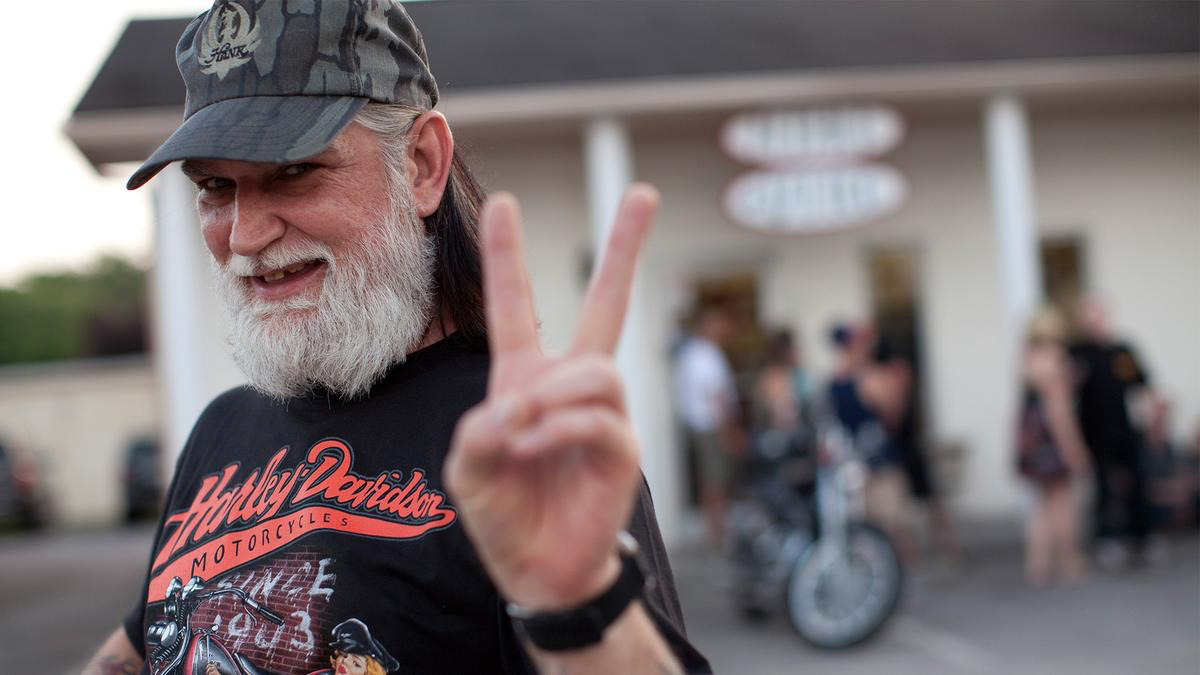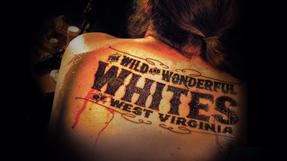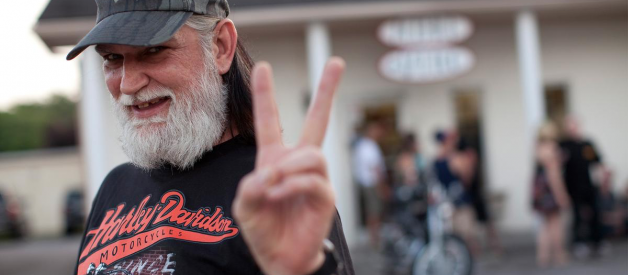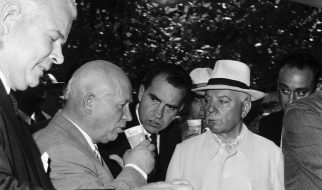Rebellion, addiction, and rural America in ?The Wild and Wonderful Whites of West Virginia?
by Marc Walkow
 ?The Wild and Wonderful Whites of West Virginia? (Tribeca Films)
?The Wild and Wonderful Whites of West Virginia? (Tribeca Films)
The story of Jesco White, the ?Dancing Outlaw,? was originally told in a pair of short PBS documentaries that profiled the West Virginia-born mountain dancer, his turbulent personal life and his improbable fame and unlikely place in American pop culture. The 2009 feature-length documentary The Wild and Wonderful Whites of West Virginia is an expansion of that story, directed by Julien Nitzberg (an associate producer on the first PBS episode) and produced by Johnny Knoxville?s Dickhouse Productions.
Taking Jesco and his late father, D. Ray White, the originator of their style of mountain dancing, as a jumping-off point, Nitzberg and his crew followed the extended White clan for a year, using their unfiltered access to capture a broad panoply of working class, rural Americana. Which is to say, parking lot drug deals, home tattooing, unsafe gun handling, multiple visits to jail and rehab, courtroom appearances, trailer park antics, plenty of Confederate flags, and enough onscreen meth, pot and cocaine use for the viewer to practically get a contact high.
It?s a wild ride with the family known as ?Appalachian royalty? and, according to musician Hank Williams III, ?the true rebels of the South.? It?s also a can?t-look-away freakshow that meshes perfectly with the aesthetic of the Jackass shows created by Knoxville and most likely enjoyed by everyone profiled in the documentary, though I can?t imagine that many of them heed the show?s ?don?t try this at home? warnings.
Notorious, nonconformist and strangely charismatic, the White clan originated from patriarch D. Ray White, who fathered 13 children before being shot in a fight in the 1980s. Based in Boone County, West Virginia, in the Appalachian Mountains, the family is simultaneously worshipped as local celebrities by their poverty-level neighbors and despised by the legal and law enforcement community, many of whom detail the family?s various crimes and misadventures in interviews scattered throughout the film.
 Watch ?The Wild & Wonderful Whites of West Virginia? on Tribeca Shortlist now.
Watch ?The Wild & Wonderful Whites of West Virginia? on Tribeca Shortlist now.
Though Jesco also pops up from time to time for interviews, and is a constant presence in the film due to his place in redneck culture, the main presence in the documentary is his sister, the larger-than-life Mamie White. In fact, most of the interviews captured by Nitzberg and his crew are with the women of the White clan, which gives the impression of a backwoods matriarchy, ruled over by the relatively sedate Bertie Mae, the elderly widow of D. Ray and mother of Mamie and Jesco. (Shockingly, Bertie Mae suffers a stroke within the time period of the documentary, and her funeral is presented onscreen by the filmmakers.)
But this rural Amazonia is an illusion, since the family also details how most of the menfolk of the clan have been killed in a variety of accidents, murders and self-inflicted gunshot wounds, leaving women and children behind. In a poignant bit late in the film, Jesco takes the filmmakers on a walk through the family cemetery, recounting all the early deaths of his siblings and cousins (one young woman murdered by her ex-husband while pregnant at age 20), and has a brief moment of introspection while considering the reasons for all the tragedy. Familial bad luck? Some kind of accumulated sin? The demons inside them? No one in the film seems able to possess the self-awareness required to answer the questions.
A side-trip to visit the sole member of the clan who seems to have escaped their Appalachian valley, Jesco?s brother Poney, reveals a bit more. After doing a bit of time for drug-related offenses in West Virginia, Poney fled with his family to become a house-painter in Minnesota, a prosaic kind of rural life that seems worlds apart from the crime, self-loathing and ?Rebel? lip service espoused by the rest of the clan.
But his kids recount in their interviews how they were abused and insulted in school, sometimes by teachers, simply because of their infamous family name, and that most of the clan is ostracized from the regular job market (or at least what remains of it, given the severe economic depression of the region) because of their backwoods notoriety. It helps to explain some of the reasons behind the bluster and ?I don?t give a f**k? attitude espoused by Mamie and her sisters.
Nevertheless, the self-destructiveness depicted in the documentary is jaw-dropping, with Jesco?s niece Kirk losing a newborn child to protective services, leading to a mini-drama of her going to court and then rehab in order to get the child back. She does, though it?s only a temporary ray of sunshine in the otherwise sad and depressing, but compellingly watchable tale.
With rural America on everyone?s mind following last year?s election, The Wild and Wonderful Whites of West Virginia has become timely once again. Although politics aren?t specifically addressed in the film (despite the Confederate flags frequently on display), it does provide a bit more insight into one slice of what might be termed ?Trump?s America.? From the family?s casting of themselves as victims of the system, despite their constant gaming of it in order to receive lifetime government assistance (one official remarks that D. Ray knew the ins and outs of the social security laws better than most attorneys), to their perpetual boasting that they ?tell it like it is? and always speak their minds, it?s not difficult to imagine the kind of disenfranchised, poverty-stricken white American voter who is supposedly responsible for our new President. But in doing so, it also highlights the disconnect between the family?s own perception of themselves (as victims, rebels and celebrities) and the cold, hard reality of their plight (self-destructive, self-pitying, dooming their future generations to the same squalor and early deaths)?and how the gulf between perception and reality is bound to grow even wider.
Director Brett Ratner on why he picked ?The Wild & Wonderful Whites?? for his Shortlist
An even more depressing, yet romanticized retelling of Jesco and D. Ray?s stories was depicted in another 2009 film, director Dominic Murphy?s White Lightnin?, which starred British actor Edward Hogg as an ur-Jesco, Muse Watson as his late father D. Ray, who speaks to his son as a kind of deux ex machina ghost, and the late Carrie Fisher as Jesco?s unlikely romantic interest. Although it uses the backstory of mountain dancing and Jesco?s troubled life and drug abuse as a starting point, it quickly moves into hyper-fictionalized territory by introducing a revenge subplot, torture and murder, and visions of God amidst self-mutilation. It?s a fascinating and demented nightmare of a film, however, and channels a bit of Cormac McCarthy in its final third, as the Jesco stand-in retreats to the forest to live in the hollow of a tree while local authorities hunt him.
Although White Lightnin? puts a unique spin on it, hillbilly horror is, of course, nothing new in movies, and everything from The Texas Chain Saw Massacre to The Hills Have Eyes to Kevin Smith?s Red State has painted rural America as a place to be feared.
But if you?re looking for a more nuanced, if still fictionalized, portrait of redneck America, two not-quite-horror exploitation whatsits definitely fit the bill. 1975?s Poor Pretty Eddie follows African-American jazz singer Leslie Uggams on a descent into a nightmare when her car breaks down in the backwoods and Elvis impersonator Eddie (Michael Christian) and his sugar mama Bertha (the amazing Shelley Winters) take her into their home, promising to get her on the road in a day or two. Eddie quickly develops an infatuation with the singer, imprisoning her but also invoking the wrath of the very jealous Bertha. By the time Sheriff Slim Pickens and Judge Dub Taylor show up, Uggams realizes she?s not in Kansas anymore and the dark heart of rural America is revealed.
1989?s Sonny Boy sets its story in the southwestern desert, and follows a psychotic clan of thieves and murderers led by Slue (Paul L. Smith) and Pearl (David Carradine, playing a woman) who abduct a baby after murdering a family of tourists, then raise the boy ? Sonny Boy ? to be their own personal killer and break-in artist, cutting out his tongue to keep him silent. Inimitable weirdo actors Brad Dourif and Sydney Lassick are part of the clan, and, like in Wild and Wonderful Whites, the filmmakers manage to draw some audience sympathy for the backwoods criminals despite their monstrousness, if only because of their constant persecution by the law. It?s a long way from Mayberry.
Stream The Wild and Wonderful Whites of West Virginia on Tribeca Shortlist now.
Marc Walkow is a writer and film programmer living in New York. Formerly a director of the New York Asian Film Festival, he has also produced DVDs and Blu-rays for Criterion and Arrow Video.


